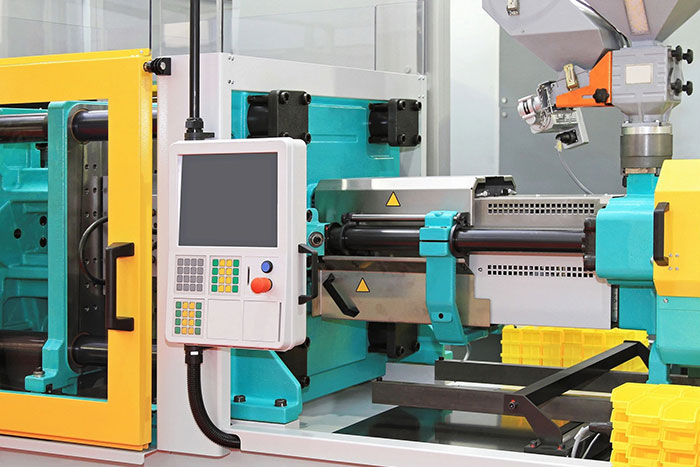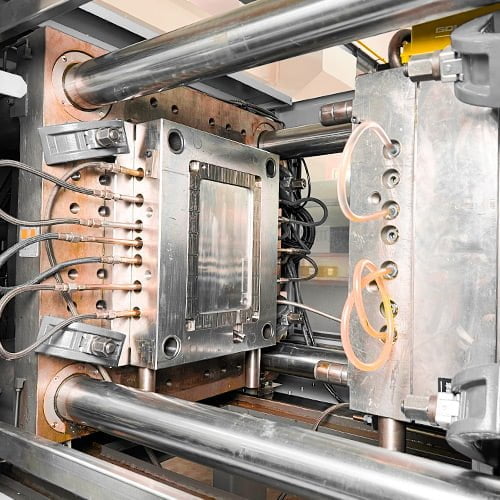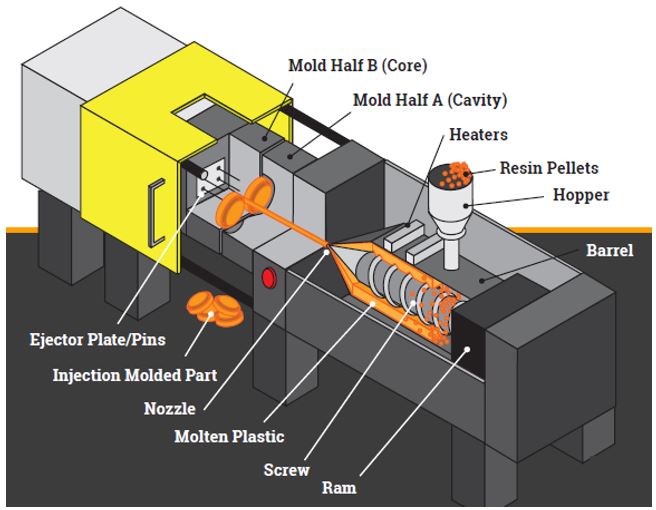The Future of Plastic Injection Molding: Innovations and patterns to Enjoy
As the plastic injection molding industry progresses, numerous key trends are emerging that pledge to improve its landscape. Automation and clever manufacturing techniques are readied to improve performance, while the change in the direction of sustainable materials reflects a growing environmental consciousness. Moreover, innovations in 3D printing are leading the way for unprecedented design flexibility. These innovations likewise bring forth obstacles that require cautious consideration. Recognizing exactly how these components will certainly connect and influence future practices is vital for stakeholders aiming to browse this transformative duration efficiently.
Automation and Smart Production
As the plastic injection molding industry advances, automation and wise manufacturing are taking center phase, changing manufacturing procedures - Plastic Injection Molding. The combination of advanced modern technologies such as robotics, IoT (Web of Things), and fabricated intelligence is enabling suppliers to improve performance, minimize operational expenses, and improve item quality. Automated systems simplify process, minimizing hands-on intervention and boosting throughput, which is vital in fulfilling the rising need for quick production cycles
Smart making technologies promote real-time monitoring and information analysis, enabling firms to optimize equipment performance and anticipate upkeep needs. This positive approach not only decreases downtime but likewise expands the lifespan of devices. The use of joint robotics, or cobots, enhances the flexibility of manufacturing lines, enabling makers and employees to run side by side safely and efficiently.
The adoption of automation in plastic injection molding is not simply a pattern yet a strategic crucial for organizations intending to remain competitive in a global market. By using these innovations, manufacturers can achieve higher precision, lower waste, and adapt swiftly to altering customer needs, positioning themselves for sustainable growth in a progressively computerized future.
Sustainable Products and Practices
The press towards automation and clever production has led the method for a better emphasis on sustainable materials and practices within the plastic shot molding sector. Firms are significantly looking for green options to standard petroleum-based plastics, causing the adoption of bio-based and recycled materials. These lasting products not only reduce ecological influence however also align with customer demand for greener products.

Moreover, cooperation in between suppliers, product suppliers, and environmental organizations is fostering development in the development of sustainable materials that satisfy efficiency criteria without compromising quality. As regulations around plastic usage come to be more stringent, the sector is positioned to adjust by accepting these sustainable methods, guaranteeing long-lasting practicality and decreasing reliance on non-renewable sources. The assimilation of sustainability right into plastic injection molding is not merely a trend; it is becoming an essential part of company obligation and operational excellence.
Breakthroughs in 3D Printing
Current improvements in 3D printing innovation are considerably changing the landscape of plastic shot molding. Impossible or as soon as difficult to achieve with conventional approaches, the combination of additive manufacturing procedures allows for the quick prototyping of complicated geometries that were. This capability not just accelerates item development cycles yet likewise reduces product waste, aligning check my site with the expanding need for sustainable production methods
Moreover, the introduction of hybrid manufacturing strategies, which integrate 3D printing and shot molding, provides suppliers the capability to develop intricate layouts while maintaining the effectiveness of automation. This method makes it possible for the production of personalized components tailored to certain customer demands without giving up the speed and scalability that shot molding gives.
Additionally, innovations in materials, such as high-performance polymers and compounds especially developed for 3D printing, are boosting the useful abilities of published elements. These products can hold up against greater anxiety and exhibit improved thermal residential properties, making them suitable for more demanding applications.
As 3D printing proceeds to advance, its integration right into plastic injection molding processes assures to boost productivity, minimize expenses, and foster innovation in product style, placing makers to much better meet the challenges of an open market.
Data Analytics and IoT Integration
Data analytics and the integration of the Web of Things (IoT) are changing plastic shot molding by giving manufacturers with unprecedented understandings right into their procedures. By leveraging real-time information accumulated from interconnected equipments and sensing units, suppliers can monitor performance metrics, identify inadequacies, and maximize manufacturing procedures. This data-driven approach facilitates predictive upkeep, lowering downtime and prolonging devices lifespan.
Furthermore, IoT integration enables improved high quality control. By continuously tracking variables such as temperature level, cycle, and pressure times, makers can swiftly detect discrepancies from established criteria and make modifications in real time. This not just enhances item uniformity but additionally decreases waste and scrap you could try here prices.
The blend of data analytics and IoT modern technologies likewise empowers makers to adopt even more nimble manufacturing techniques. With accessibility to extensive information analytics, companies can respond to market needs with better flexibility, adjusting manufacturing timetables and configurations as required. This adaptability is crucial in a quickly transforming manufacturing landscape.

Personalization and Layout Adaptability
Exactly how can customization and layout adaptability improve the competitiveness of plastic shot molding? Personalization enables manufacturers to fulfill certain client demands, fitting distinct dimensions, forms, and performances that standard items may not fulfill.
Innovations in style technologies, such as computer-aided style (CAD) and rapid prototyping, more reinforce this trend. These devices enable developers to create detailed patterns and complicated geometries, which can be seamlessly incorporated into the manufacturing process. Consequently, manufacturers can react swiftly to altering customer preferences more helpful hints and market needs.
Moreover, the execution of modular tooling systems enhances style adaptability, enabling quicker adjustments between various item designs without substantial downtime. This adaptability can result in lowered lead times and lower manufacturing costs, making business extra affordable and agile. Ultimately, accepting modification and design versatility in plastic shot molding not just elevates product offerings however additionally reinforces market positioning in an ever-evolving landscape.
Conclusion
The future of plastic shot molding is defined by considerable improvements in automation, sustainable practices, and innovative materials. Modification via modular tooling and fast prototyping will enable manufacturers to stay responsive and competitive to the vibrant demands of the market.

The future of plastic shot molding is characterized by considerable improvements in automation, sustainable practices, and cutting-edge products.
Comments on “How Plastic Injection Molding Ensures Consistency and Accuracy in Manufacturing”